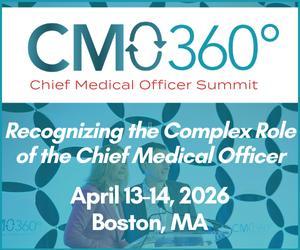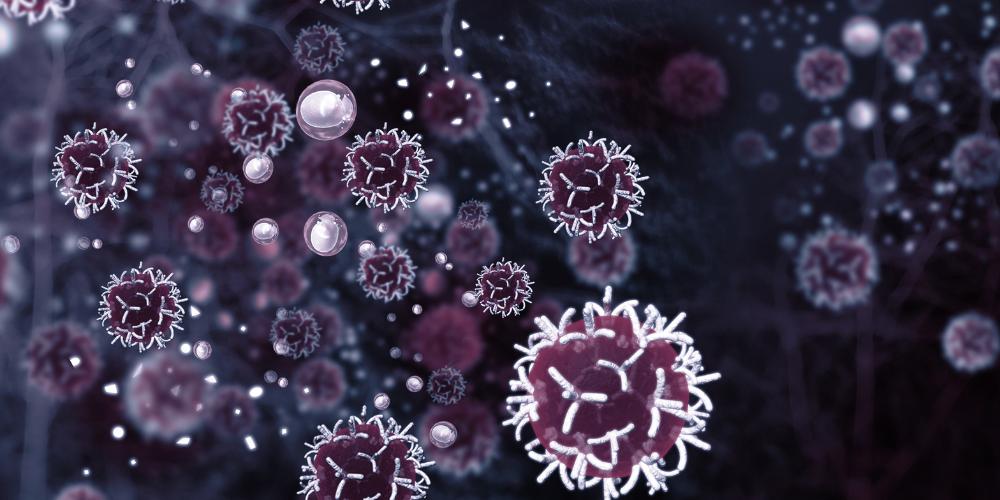Dr Arie Belldegrun on Staying Ahead of the Scientific Curve
Dr Arie Belldegrun sat down to share his thoughts on exciting innovations in cell therapy, how he approaches investment, and staying dynamic with constantly evolving technology. Arie Belldegrun, MD, FACS, is the executive chairman and co-founder of Allogene Therapeutics as well as the co-founder and senior managing director of Vida Ventures.

What does it mean to you to light the fire of biotech innovation?
I gave that title for my presentation at a conference last year and I’m not sure that’s the right title anymore. There is no need to light the fire now. Biotech innovation is more on fire now than anything that I recall in the last 25 years of my experience in the life science business. If one just looks at the last quarter of 2020, there were $6.4 billion of new investments in life science, the highest ever in biotech.
People realize that when there is a major medical problem in the world, the best scientists and drug developers jump in and come up with solutions that save lives. Therefore, drug pricing and other issues that usually come before election time take a backseat to the issues that we can solve in life sciences.
How do we capitalize on that fire and make sure the innovation creates lasting change?
This process of innovation is now unstoppable. The Human Genome sequence project was completed 17 years ago. Once the scientific community started understanding the different molecular dimensions of human health it gave rise to precision medicine, gene therapy, immunotherapy, the development of molecular markers and other important translational discoveries. The biotech world then moved away from the traditional trial-and-error strategies to evidence-based discoveries. Once the genes are cloned and their function understood, the rest is straightforward and the process can run fairly quickly.
Today, science drives innovation. These innovations are then translated to medicines. If you look at cell and gene therapy, gene repairs and CRISPR gene editing, these are all revolutionary and life-changing discoveries. That’s also why more and more young researchers are moving to work on true translational science. We are definitely in the right space in 2020.
"Cell therapy has to be a group effort, rather than a one-man show. It’s not about a star CEO. It’s about bringing the best people and the best technology together."
What do you see as some of the critical success factors for the many companies in the cell and gene therapy space?
Undoubtedly, impressive early clinical data was the driver for the proliferation of companies in the space. In 2009, when we founded Kite Pharma to devote a company to engineering the human immune system, it was the only company I am aware of that was dedicated to the field. Over the following years, others joined the field. Today, there are over 400 cell therapy companies. It became a truly exciting field where each company believes that they have something unique and better than the others.
The early success in the field was really driven by a small group of leaders in cellular therapy. There were only a handful of centers dedicated to engineered cell therapy who continued to develop the science despite lack of funding or interest by the biotech world. They brought it to a place where Kite and others were able to successfully translate it to patients. That was the seed. Without them, the entire field would have never proliferated as is the case today.
Once the proof-of-concept for the technology was recognized, it started to gain the interest of the clinical and the scientific communities. What excited them most was the fact that within 3-4 weeks from infusing the cells, major tumor masses melted away and patients dramatically improved. The patient’s own engineered lymphocytes home to the tumor and destroy it. This is done with a single infusion and treatment, rather than chemotherapy for life.
The early trials started with leukemia and lymphoma and then moved to other blood cancers, such as multiple myeloma. The next challenge is solid tumors. What drives excitement is the ability of patients to achieve complete responses. This is the first time we can almost talk about the “cure of cancer.” When I was in residency at Harvard, we used to say, “the C word doesn’t exist.” But today, you can talk about “cure” in a growing subset of patients. Each company will expand on these results and hopefully we will move in the right direction.
What is the biggest issue that needs to be solved for cell therapy to make a meaningful clinical impact on solid tumors?
Having established the proof-of-concept of cell therapy in hematologic oncology, the next frontier is solid tumors. This is a more challenging problem because of the host immunosuppressive environment that is generated by the cancer. Tumor-infiltrating lymphocytes (TILs) are getting to the tumor but become immunosuppressed and lose their power to kill cancer cells. Initially, we tried to take these TILs and activate them outside of the body and give them back to the patient. This was clearly not the answer.
The full solution is to work on reversing the host immunosuppression while activating the T cells to become more powerful. On the one hand, you need to increase the activity of young T cells. On the other hand, you need to decrease the immunosuppression around the tumor and create an environment where the adult T cells, NK cells and macrophages can work in concert to create a full effect against cancer cells. This is the next challenge for the field of cell therapy.
"I want to see a technology that eventually translates to a product that will make a difference."
How have you managed to stay ahead of the curve when it comes to what’s coming up the pipeline?
That is really the fun part for me. I like the challenge of being at the cutting edge of medicine and being able to predict where the science will go based on the clinical needs. I started attempting to predict where the science was going when working with Dr Steve Rosenberg at the NIH and then as a professor at UCLA, where I ran my own laboratory and could identify the areas in which I wanted to focus my research. Later on, I moved to create our own biotech companies to bring real products to benefit patients. This is a highly satisfying feeling.
Being among the first in a space is challenging but at the same time relatively simple. You do what you believe is right. Now life in the space of cell therapy is much more complicated. One needs to know what 400 or so companies are doing and find ways to differentiate yourself from the others. Not always easy. It’s gratifying for me to see how much excitement cell and gene therapy are generating today compared to just a decade ago.
What was it like to transition from the autologous space to the allogeneic space?
It was a natural process for us. At Kite, we took blood from immunosuppressed patients who already had chemotherapy, radiation and bone marrow transplants. We took the blood from the patient, sent it to our manufacturing plant, processed the cells, engineered them and then shipped it back to the hospital to give to patients.
It was exciting and the responses were dramatic but it created several issues. Number one: Manufacturing. Nobody before had built an engineered cell therapy processing facility. We had to design our own factory for cells with GMP and FDA inspections, and with no prior experience. But it worked and became a success. This year at Kite, they produced over $500 million worth of product in that facility we designed in 2015. Now at Allogene, we are building a facility that could potentially produce billions worth of product for allogeneic CAR-T therapy.
Number two: Off-the-shelf therapy. With the autologous approach, if the doctor wants the cells to be infused into a patient on a given Monday morning, the team needs weeks to produce the therapy, including weekends, in order to process and ship it to them by that day. Therefore, we started thinking about how we could make manufacturing scalable and more efficient, reduce the time a patient had to wait for therapy, and make the therapy accessible to more people all over the world.
Kite was a small company and very focused. Our mission was first and foremost to open the door for engineered cell therapy approval with the FDA. Next was to improve the therapy and make it more accessible for patients. That is how the allogeneic approach got our attention. With an allogeneic approach, we are taking blood from a healthy volunteer – not from a patient – and engineering and gene editing the cells to create CAR-T therapy that is stored in a liquid nitrogen freezer. From one patient, we can generate more than 100 treatments. When the patient needs therapy, it’s readily available.
For us, the sequence of events was very logical in moving from autologous to an allogeneic approach. After Kite was acquired by Gilead in October of 2017, we identified an opportunity at Pfizer. They had been working internally and built an amazing team of experts focused on an allogeneic approach. It whetted our appetite and we moved to partner with Pfizer and acquired these assets to create Allogene Therapeutics.
Allogene received 17 potential products from Pfizer, at different stages of development. We took 40 employees from Pfizer to Allogene and created a company dedicated 24/7 to only allogeneic product development. David Chang, CEO of Allogene Therapeutics, is doing a phenomenal job in moving these products from our labs to patients as fast as possible.
How do you stay flexible and adaptive in new areas?
Always look for the right people who can help you build a new industry and try to predict where the field is moving and how it is going to change. When building a manufacturing plant for engineered cell therapy, we found people with experience in building manufacturing for antibodies to adapt that expertise for this new space.
It was also clear to us that it could not remain a static manufacturing plant. Technology would change rapidly. The equipment will change. It’s not much different than what happened in the computer business. What is now a laptop once took up half a room. We needed to take the future into account and remain flexible. And that’s what we’re doing with what we’re building for allogeneic now.
What advice do you have for small and emerging biotechs navigating the cell & gene therapy field from early stage through commercialization?
The name of the game is focus, focus and focus. It’s tempting to do a lot of things at the same time but in order to create something unique, one must focus. Surround yourself with the best people in the industry that you can find. You need to be able to attract talent with expertise in science, in process development, in translational medicine, and clinical development, as well as experienced regulatory people who understand how to interact and gain credibility with the FDA. Finally, remember that in the business of cell and gene therapy it’s all about the “art” and science of manufacturing the product.
Cell therapy is different than any other pharmaceutical product, and given its complexity it has to be a group effort, rather than a one-man show. It’s not about a star CEO. It’s about bringing the best people and the best technology together. Technology is rapidly changing and it must constantly be under consideration.
"People realize that when there is a major medical problem in the world, the best scientists and drug developers jump in and come up with solutions that save lives."
As someone who has founded biotechs and also has invested in biotechs, what do you look for in companies to invest in?
Three years ago, we founded Vida Ventures, a venture capital group that focuses on investing in cutting-edge technologies and companies. Since then we had the privilege of evaluating many hundreds of opportunities that were presented to our team. We therefore have quite a good understanding of what is out there in the world of Life Science.
How do we try to select the winners? We first evaluate the science. If I don’t believe that it will make a major change in the life of patients, I am personally less excited. I want to see a technology that eventually translates to a product that will make a difference.
The second criterion is people. How experienced are they? What’s their scientific level and experience? How’s their integrity? Have they brought a product to the market? Are they good drug developers? Then there is evaluation of the intellectual property. So science comes first but there is also a bit of an art component to good investing.
Different VC groups have different investment philosophies. The size of the investment per company also dictates the selection process in which companies to invest. At Vida Ventures we limited how much money we took from investors because we wanted to focus on which type of companies we were interested to invest in. In our fund 1, we wrote checks anywhere between $10- 20 million per company. In fund 2, we are now investing up to $50 million per the life of a company. So that’s also an important component and dictates the type of company in which to invest.
Speaking of the next generation, is there anything coming down the pipeline that really excites you?
There are a lot of areas that personally excite me these days. But mainly I can see great promise in the near future in the areas of cell therapy and immunotherapy, gene therapy, precision medicine, transcription regulators and undruggable targets.
The field of engineered cell therapy started with developing products for blood cancers, since it was felt that they represent the lowest hanging fruits for success and FDA approval. Next are solid tumors and nononcologic indications such as autoimmune diseases, HIV and inflammatory bowel disease. At Vida, for example, we are founding investors, together with Gilead, in a company called Kyverna to focus on that area.
Beyond cell and immunotherapy, the prospect is fantastic for correcting genes in monogenic disorders, using gene therapy. Currently, the focus is on rare diseases, as they are caused by a single gene defect. Cancer is a more complicated story, where multiple gene defects and mutations exist. But with gene editing technology we are going to see exciting developments in cancer and other more complex diseases.
Precision medicine, for both oncologic and non-oncologic indications, is also an exciting area. Understanding the precise molecular mechanisms and the science behind a given disease opens the opportunity to either block, activate, or manipulate the defect of the disease based on precision approaches.
Finally, the area of transcriptional regulatory networks and protein degradation or inhibition of undruggable targets is quickly coming up as an intriguing new field of drug development. We are involved in that area with more than one company, but the more advanced one is Kronos Bio, under the leadership of Norbert Bischofberger.
To watch Dr Belldegrun speak about his vision for treating cancer, with Fred Hassan of Warburg Pincus, click here.
For more information on IO360º Summit, visit io360summit.com.









